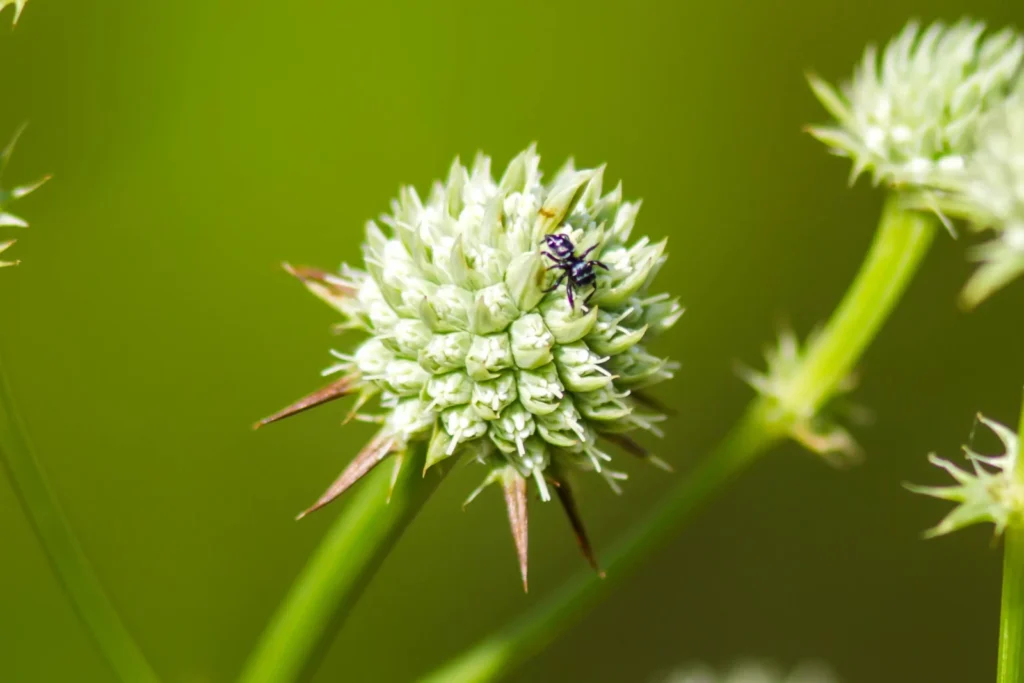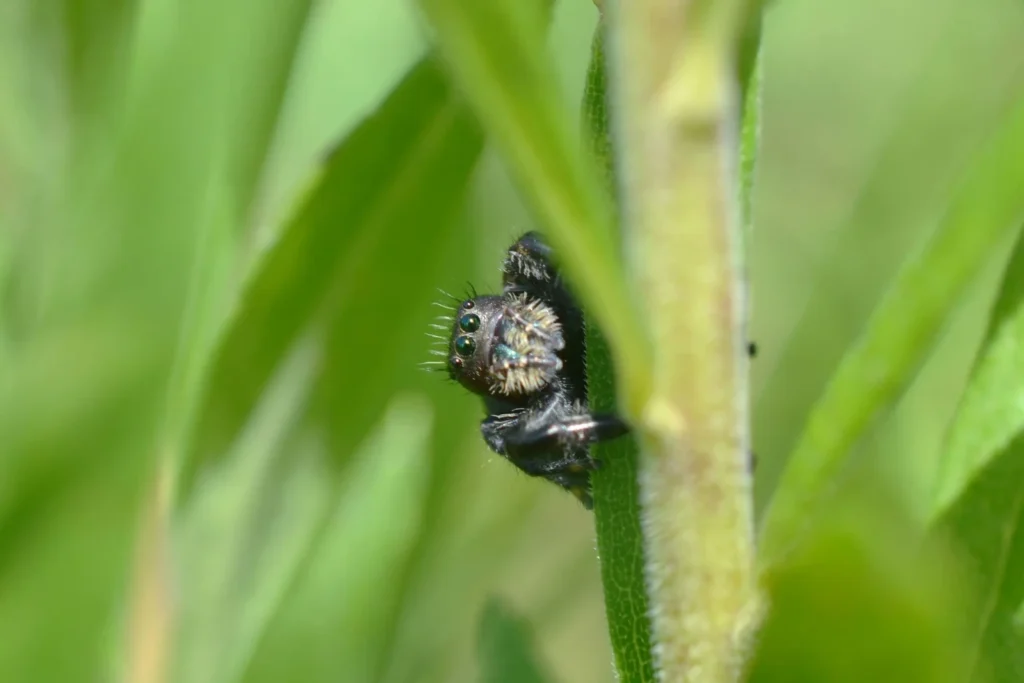Phidippus audax, or brave horse spider,- this is one of the most famous representatives of the family of horse spiders (SalticidaeIt gets its name from its brash behavior, high speed, and unique coloring. This spider does not weave fishing nets, but hunts with the help of jumps and excellent vision.
📌 Why is this spider so interesting?
✔ Has excellent eyesight - one of the best among spiders
✔ Uses jumps to hunt and escape from predators
✔ Safe for humans, although it looks intimidating
✔ It has bright iridescent chelicerae
✔ Common in North America and adapted to different environments
This spider deserves attention due to its unique abilities and unusual coloring. Let's take a closer look at it!

Scientific classification
✔ The Kingdom: Animals (Animalia)
✔ Type: Arthropods (Arthropoda)
✔ Class: Arachnids (Arachnida)
✔ Row: Pavuk (Araneae)
✔ Family: Horse spiders (Salticidae)
✔ Gender: Phidippus
✔ View: Phidippus audax
📌 The name "audax” means" bold " in Latin – this spider is not afraid of even larger creatures and actively explores the world!
Appearance and features
🕷 What does Phidippus audax look like?
✔ Body size: 8-15 mm (males are smaller than females)
✔ Color: black or dark brown body with white, yellow or orange spots
✔ Oko: large, arranged in three rows, provide excellent vision
✔ Chelicerae: bright green, blue or purple, shimmering in the light
✔ Paws: they are covered with small hairs that help in jumping
📌 Phidippus audax is easily recognized by its shiny chelicerae-they shimmer under different lighting angles.

Distribution area and habitat
🌍 Where does the bold steed spider live?
✔ North America: USA, Canada, Mexico
✔ South America: it is occasionally found in the northern regions
✔ Caribbean Islands
✔ Europe: imported to some countries
📌 This spider adapts to any environment-it can be found in forests, fields, gardens, on the walls of houses and even indoors!
Lifestyle and behavior
🌿 How does Phidippus audax live?
✔ Active during the day, sees well even in bright sun
✔ Hunts without a webby using your fast jumps
✔ It has a " safety cable” - releases a web thread before jumping
✔ Quite interesting and not afraid of people
✔ They can jump in different directions, even backwards!
📌 This spider does not weave traditional webs, but instead stalks its prey like a true predator!

Food
🍽 What does Phidippus audax eat?
✔ Small insects (flies, mosquitoes, butterflies)
✔ Other spiders
✔ Small invertebrates
✔ In rare cases-small lizards
📌 Thanks to its excellent eyesight, this spider perfectly aims when jumping on prey.
Hunting method
🕸 Yak Phidippus audax catch prey?
✔ Detects prey thanks to its sharp eyesight
✔ Creeps up slowly, judging the distance
✔ Attaches a "safety line" before jumping
✔ Makes an accurate jump and introduces poison
✔ Holds the victim with its paws and consumes it
📌 Unlike most spiders, this species actively uses vision, and not the vibrations of the net.
Reproduction
❤️ How does the bold racehorse spider breed?
✔ Males perform mating dances before females
✔ After mating, the female lays her eggs in a spider cocoon
✔ The larvae hatch in a few weeks
✔ Young spiders are independent immediately after emerging from the cocoon
📌 Males often live near females, but can be eaten after mating.

Poison and danger to humans
🚨 Is Phidippus audax dangerous for humans?
✔ The poison is weak, does not pose a threat to humans
✔ Possible bite symptoms:
* Slight redness
* Itching or pain similar to an ant bite
* Passes independently in a few hours
📌 This spider is more afraid of people than people are of it, and rarely bites even when threatened.
Interesting facts
💡 Phidippus audax is one of the most intelligent spiders!
💡 Can learn and memorize the route to food!
💡 Its chelicerae change color depending on the light!
💡 It sees in color, unlike most spiders!
💡 Able to jump a distance several times its size!
Conclusion
🕷 Phidippus audax is one of the most interesting spiders in the world! Its unique hunting style, excellent eyesight, and bright chelicerae make it not only an effective predator, but also an object of admiration among entomologists.
🌿 If you meet this spider, do not be alarmed – it is absolutely safe and can even show interest in people!
